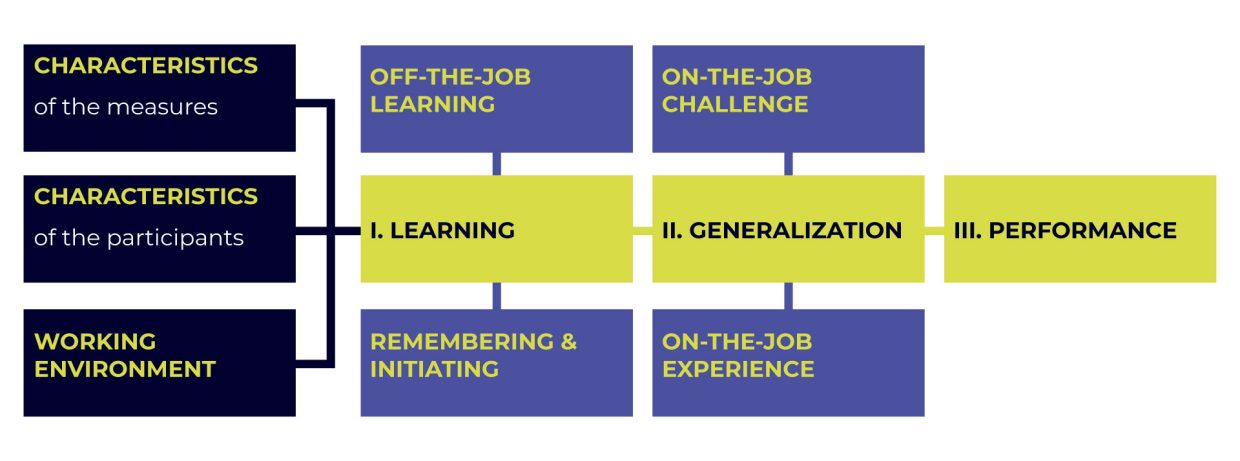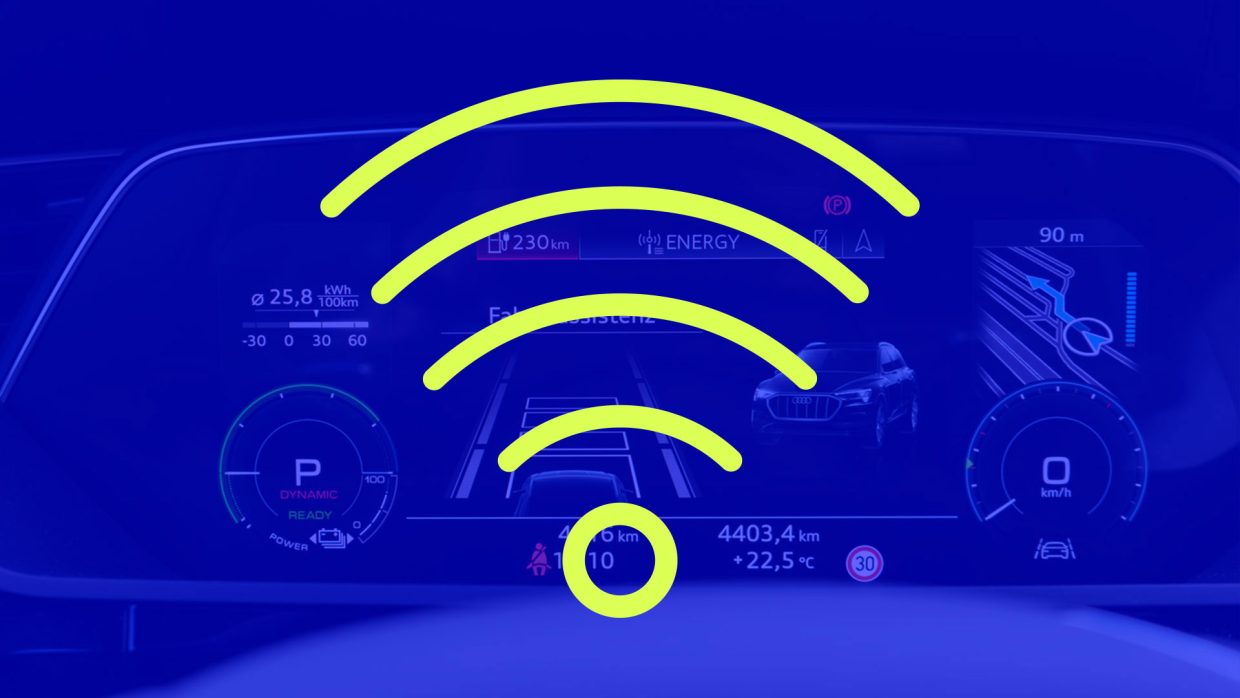The P3 Learning-Performance Model, co-developed by the P3 Academy, is the result of intensive engagement with relevant literature – including Baldwin & Ford (2004), Thalheimer (2010), and Nowotny & Tantau (2013).
However, the model is more than just a theoretical foundation. It is continuously refined by the P3 community and lived in practice. Through constant exchange and application in the workplace, it is continuously adapted to current challenges and needs. This creates a dynamic system that optimizes learning processes and specifically targets performance improvement.
At its core, the model focuses on an individual’s learning process and their contribution to overall performance. Trainings are not seen as isolated events, but as part of a comprehensive chain of effects that extends from planning through implementation to follow-up. The goal is to ensure that participants can transfer what they have learned to future work situations, creating measurable value for both themselves and their organizations.

Characteristics of Successful Trainings
Several factors are essential for a successful individual learning process. First, the quality of the learning content must be high, and second, the selection of methods and media that support the learning process is crucial. Trainings should be practical and closely linked to the professional requirements of the participants. Of particular importance is the competence of the trainers, who, with their expertise and didactic skills, enable and support the transfer of learning.
The P3 Academy places great emphasis on ensuring that its trainers not only impart knowledge but also act as coaches, guiding participants on their individual developmental paths. This approach promotes not only short-term knowledge transfer but also long-term success by applying what has been learned to everyday work.
Participant Requirements
Participants must also meet certain prerequisites for the learning process to be effective. Their mental state plays a crucial role. It is important for participants to have the opportunity to set aside everyday worries and focus entirely on the training. Techniques such as Theme-Centered Interaction (TCI) help participants integrate external factors that could hinder learning into the learning process.
Another key element is the participants’ willingness to change. While some view change as an exciting challenge, others need more time to engage with new content and concepts. The P3 Learning-Performance Model takes these individual differences into account and creates a learning environment that is both motivating and supportive.
The Working Environment as a Success Factor
Successful implementation of what has been learned largely depends on the support of the work environment. Supervisors and colleagues play a central role. They should actively support and encourage the learning process to ensure that learning transfer into the workplace is successful. The P3 Academy applies the principle of “demanding and promoting,” where the trainer acts as a coach and leadership partner for the learner.
Another important aspect is the use of “job aids” – tools such as flashcards, charts, or digital aids that help participants apply what they have learned directly in their work. These aids not only support memory retention but also facilitate the practical application of new concepts and practices.
Follow-Up and Sustainable Learning Transfer
Learning transfer doesn’t end when the training is over. In fact, follow-up is crucial to ensuring long-term success. The P3 Academy emphasizes follow-up sessions and on-the-job challenges that encourage participants to apply what they’ve learned in practice. By reflecting on their experiences and exchanging ideas with colleagues or mentors, participants deepen their learning and solidify their knowledge.
Another key component of the model is the “on-the-job experience.” This involves trying out and continuously refining newly acquired skills in real work situations. Trainers at the P3 Academy teach methods for reflection and peer exchange in their seminars, helping participants recognize their progress and continue improving their abilities.
The Role of the P3 Trainer Community
A unique feature of the P3 Learning-Performance Model is its ongoing development by the P3 trainer community. The experiences and feedback of both participants and trainers are continuously incorporated into the model. This ensures that it is not only theoretically sound but also tested and relevant in practice. The P3 trainer community ensures that the model remains flexible and adaptable to respond to the evolving demands of the modern workplace.
Conclusion: P3 Academy – Training Formats with Sustainable Impact
Based on the P3 Learning-Performance Model, the P3 Academy offers highly effective training formats that comprehensively support the learning process – from planning and implementation to sustainable follow-up. By closely linking theory and practice, and through continuous development by the P3 community, the Academy ensures that participants not only acquire knowledge but successfully integrate it into their professional practice.




